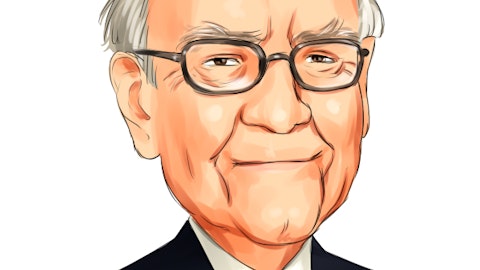The most popular small cap stocks among hedge funds, as revealed by 13F filings, produce an excess return of 18 percentage points per year according to our research (learn more about our small cap strategy). This is the case even though 13Fs disclose long equity positions at the end of a quarter but are only released six to seven weeks later. Other hedge fund strategies based on 13Fs may also be possible. These filings can also be used to look up top managers’ stock picks and then do more research on the companies if they seem like good values.
Billionaire Bill Ackman of Pershing Square achieved large paper profits immediately following his short presentation on Herbalife Ltd. (NYSE:HLF) late last year, but the victory was short lived. A number of value investors questioned his reasoning for shorting the stock, and Herbalife is now close to where it was trading before Ackman went public. The issue has also become personal after a fierce argument with activist investor Carl Icahn on CNBC. When we studied Pershing Square’s most recent 13F (which, as a reminder, does not report short positions) compared to previous filings we found very little change. Here are some trends among Ackman’s top picks:
Canadian Pacific. The Canadian railroad was again the largest holding by market value in Pershing Square’s portfolio, with the fund reporting a position of over 24 million shares. Canadian Pacific Railway Limited (NYSE:CP)’s stock price is up 60% in the last year; while earnings did drop last quarter compared to the fourth quarter of 2011, Wall Street analysts believe that the company will bounce back and so the forward P/E is only 16 (the company did report higher revenues over the same time frame). The railroad industry carries the Warren Buffett seal of approval, with Berkshire Hathaway having purchased large U.S. railroad Burlington Northern Santa Fe a few years ago (see Buffett’s stock picks).
Retail. Two retail related companies were among Ackman’s top picks: General Growth Properties Inc (NYSE:GGP), which he famously earned an enormous return on following his presentation on the company in May 2009, and J.C. Penney Company, Inc. (NYSE:JCP). General Growth, which is primarily engaged in ownership of shopping malls and other retail properties, is organized as a real estate investment trust; it currently pays a dividend yield close to 2.5%. The struggling JC Penney saw its sales fall 27% in the quarter ending in October compared to the same period in the previous fiscal year, and analyst consensus is that it will remain unprofitable for some time (the company has reported higher than expected losses in each of the last three quarters). 43% of the outstanding shares are held short.
See two more stocks Ackman liked:
Consumer goods. Pershing Square’s retail stocks weren’t its only exposure to consumer spending: the fund also owned about 28 million shares of The Procter & Gamble Company (NYSE:PG) and over 20 million shares of Beam Inc (NYSE:BEAM). Beam is a growth stock, with double-digit percentage increases in both revenue and earnings in the fourth quarter of 2012 versus a year earlier. However, at a trailing P/E of 26 a good deal of future growth is already priced into the current price. Giant Procter & Gamble’s market capitalization of over $200 billion places its valuation at 17 times trailing earnings. While a personal products company of its size might not be a particularly good pure value stock at that pricing, Procter & Gamble does offer some defensive characteristics including a beta of only 0.3 and a dividend yield of almost 3%.
Ackman’s retail picks don’t look particularly interesting to us; we think that we would avoid both. Procter & Gamble also looks too expensive unless an investor’s portfolio is in need of some downside protection. That leaves Canadian Pacific- which at this point looks like it is better placed on a watch list until it becomes more clear that the company is going to perform well going forward- and Beam; that company might grow enough to merit a higher valuation but we would be cautious of recommending it without being more persuaded that the business will beat market expectations.
Disclosure: I own no shares of any stocks mentioned in this article.






